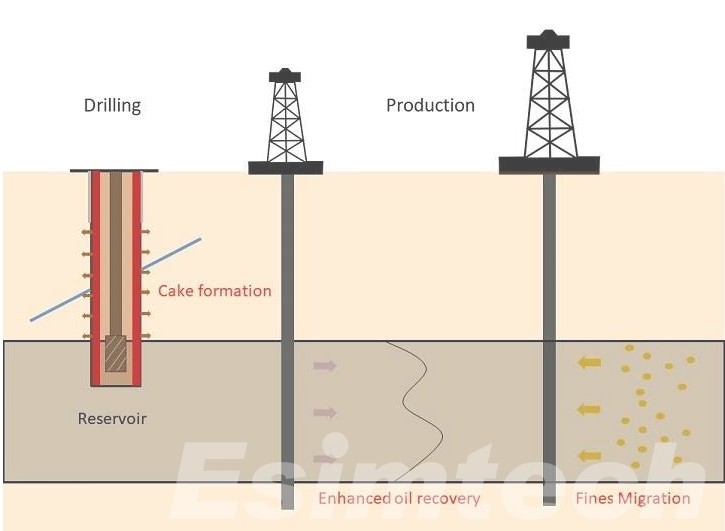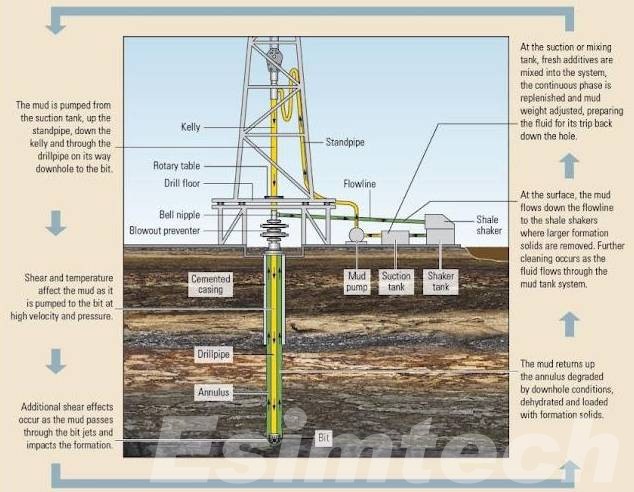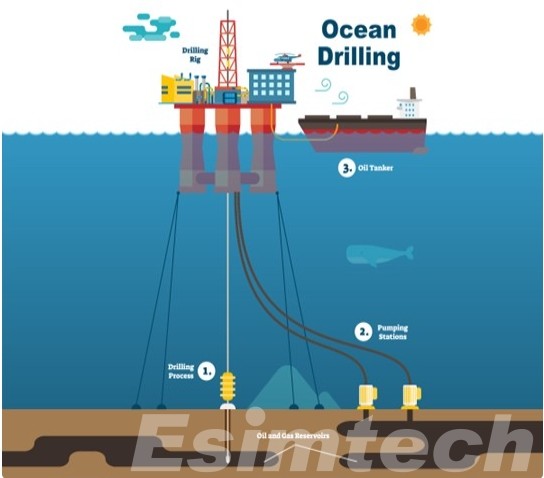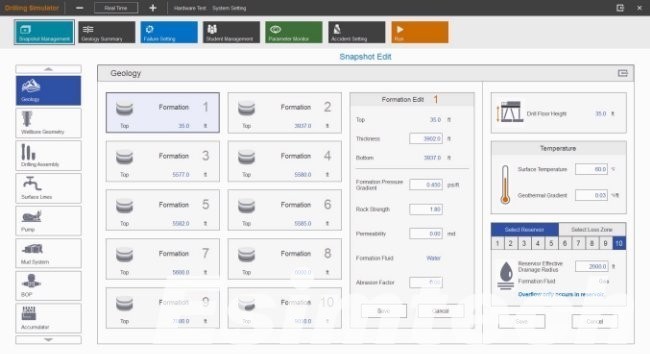How Drilling Fluid Innovations are Driving Advancements in the Oil and Gas Industry
Drilling fluid innovations are revolutionizing the oil and gas industry by driving efficiency, sustainability, and safety in drilling operations. Traditionally, drilling fluids, also known as drilling muds, performed fundamental activities such as lubricating the drill bit and transporting drill debris to the surface. However, new advancements are pushing the limits of what drilling fluids are capable of, paving the way for more efficient and environmentally friendly drilling practices.

An Overview of Traditional Drilling Fluid
| Aspect | Description |
| Definition | Traditional drilling fluid, also known as water-based mud (WBM), is a type of drilling fluid that primarily consists of water as the base fluid, along with various additives and solids. |
| Composition | Comprised mainly of water, along with additives such as clay (bentonite), weighting agents (barite), viscosities (starches or polymers), and other chemicals to control rheology, density, and other properties. |
| Functions | Performs essential functions such as lubricating the drill bit, carrying cuttings to the surface, maintaining wellbore stability, controlling pressure, and cooling the drill bit during drilling operations. |
| Advantages | Relatively low cost compared to oil-based or synthetic-based muds, readily available components, environmentally friendly, and suitable for a wide range of drilling conditions. |
| Limitations | Limited temperature and pressure tolerance, susceptibility to contamination from reactive formations, the potential for shale swelling and borehole instability, and increased fluid loss in porous formations. |
| Applications | Widely used in land-based drilling operations, shallow wells, water-sensitive formations, and environmental regulations that restrict the use of oil-based or synthetic-based muds. |
| Rheology Control | Achieved through the addition of viscosities (e.g., bentonite) and thinners (e.g., lignosulfonates) to control fluid viscosity, yield point, gel strength, and other rheological properties. |
| Density Control | Adjusted using weighting agents such as barite to provide sufficient hydrostatic pressure to balance formation pressures and prevent well kicks or blowouts during drilling operations. |
| Filtration Control | Employed to prevent fluid loss into permeable formations and maintain wellbore stability using additives such as bentonite, polymers, and specially designed fluid loss control agents. |
| Environmental Impact | Considered relatively environmentally friendly compared to oil-based or synthetic-based muds, but still requires proper management of waste disposal, spill prevention, and environmental protection measures. |
| Disposal and Recycling | Disposal methods include treatment and recycling of drilling fluids where feasible, as well as proper disposal of cuttings and contaminated fluids in accordance with environmental regulations. |

Key Advancements in Drilling Fluid
1. Enhanced Performance through Nanotechnology
One of the most promising areas of innovation in drilling fluids lies in the integration of nanotechnology. Nanoparticles, due to their extremely small size, possess unique features that can considerably increase the performance of drilling fluids. For example, the addition of nanoparticles like graphene or carbon nanotubes can improve the fluid’s thermal conductivity, lubricity, and rheological properties. This results in improved drilling efficiency, reduced frictional losses, and better wellbore stability, ultimately leading to cost savings and enhanced operational safety.
2. Environmentally Friendly Formulations
In recent years, there has been a greater emphasis on creating drilling fluids that are both environmentally benign and sustainable. Traditional drilling fluids frequently contain additives and chemicals that, if not adequately handled, can harm the environment. However, advances in formulation processes have resulted in the development of environmentally friendly alternatives that are biodegradable, non-toxic, and low in emissions. These new fluids not only reduce the environmental impact of drilling operations, but also adhere to strict standards, reducing possible legal and reputational risks for operators.

3. Bio-Based Additives
Another notable innovation in drilling fluid technology is the incorporation of bio-based additives obtained from renewable resources, such as plant extracts, microbial enzymes, and biopolymers. These additives offer several advantages over their synthetic counterparts, including improved biodegradability, reduced toxicity, and enhanced performance in challenging drilling environments. Additionally, bio-based additives contribute to the industry’s efforts to reduce its reliance on fossil fuels and mitigate carbon emissions, aligning with global sustainability goals.
4. Smart Fluid Systems
The advent of smart fluid systems represents a paradigm shift in drilling fluid technology, where traditional fluids are augmented with intelligent sensors and data analytics capabilities. These systems continuously monitor key parameters such as temperature, pressure, viscosity, and composition in real time, allowing for proactive adjustments and optimization of drilling operations. By leveraging data-driven insights, operators can identify potential issues early on, minimize downtime, and maximize drilling efficiency, ultimately leading to significant cost savings and improved well productivity.
Simulation Technology Used in Drilling Fluid Innovations
Simulation technology plays a crucial role in the development and optimization of drilling fluid innovations.
1. Fluid Behavior Modeling
Engineers can use simulation software to model the behavior of drilling fluids under various situations that may arise during drilling operations. This includes replicating the fluid’s flow characteristics, rheological properties, and thermal conductivity as they interact with various formations and temperatures downhole. Engineers can maximize efficiency and performance by precisely forecasting fluid dynamics.

2. Designing Eco-Friendly Formulations
Simulation tools allow for the development and testing of environmentally friendly drilling fluid mixtures without the requirement for significant laboratory or field testing. Engineers can examine the environmental impact of various additives and formulations, including biodegradability, toxicity, and emissions. This enables the manufacture of ecologically friendly drilling fluids that meet regulatory criteria while minimizing environmental impact.
3. Nanoparticle Integration
Simulation technology aids in the integration of nanoparticles into drilling fluid formulations. Engineers can simulate the behavior of nanoparticles at the molecular level, predicting their interactions with other components of the fluid and the surrounding formations. This enables the optimization of nanoparticle concentration, size, and distribution to enhance fluid properties such as thermal conductivity, lubricity, and stability.
4. Digital Twin Modeling
Digital twin technology creates virtual replicas of drilling fluid systems, allowing engineers to simulate and optimize fluid performance in real time. By integrating data from sensors and drilling parameters, digital twins can predict fluid behavior and performance under changing downhole conditions. This facilitates proactive decision-making, enabling operators to adjust fluid properties and parameters to maximize drilling efficiency and minimize risks.
5. Predictive Maintenance
Simulation technology can also be applied to predict and prevent issues related to drilling fluid systems, such as equipment failure or fluid degradation. By simulating the performance of fluid handling equipment and monitoring key parameters, operators can anticipate maintenance needs and schedule interventions proactively, reducing downtime and optimizing equipment lifespan.
6. Cost Optimization
Oil and gas simulation tools aid in the optimization of drilling fluid formulas and operations, reducing costs while increasing performance. Engineers can identify cost-effective solutions while maintaining safety and efficiency by simulating numerous scenarios and parameters. This includes modifying fluid composition, concentration, and usage rates to get the best performance at the lowest possible cost.

Conclusion
Drilling fluid innovations are propelling significant progress in the oil and gas industry, ushering in a new era of efficiency, sustainability, and safety. From nanotechnology-enhanced fluids to eco-friendly formulas and smart fluid systems, these advancements are transforming drilling procedures for the better.
Simulation technology is critical for fostering innovation and optimization in drilling fluid formulations and operations. By enabling accurate modeling, prediction, and optimization of fluid behavior, simulation tools help engineers develop environmentally sustainable, cost-effective, and high-performance drilling fluids that meet the evolving needs of the oil and gas industry.
